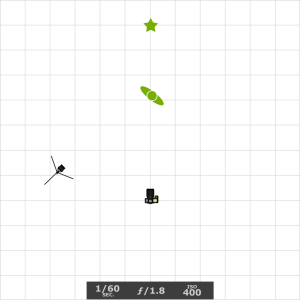| Click on the photo to see it larger. |
By changing your ISO when using your flash, you can change the look of the background. For example, with the camera on a tripod and using Aperture priority mode, all I did between these three photos was change the ISO from ISO 100 [far left], ISO 400 [center], and ISO 2000 [far right].
I have the flash-off camera to the left, as shown in the diagram below. The flash setting is the normal mode. The flash is in the TTL model, so it is adjusted as needed to the scene.
 |
| Click on the photo to see it larger. |
I did the same thing in these three and just changed one setting. The flash mode is set on “slow sync mode.”
As the ISO increases, the odds of you blowing out the subject with the flash will increase as you lower the ISO, the darker the background.
As you change the ISO, shutter speed is the only other setting changing since I am in Aperture mode. Now, unless you want a blurred image, you need to keep that shutter speed close to the lens’s focal length. If you have a 35mm lens, try shooting at 1/30 or faster. If you shoot with a 200mm lens, you need to be at 1/200 or 1/250.
I have the flash on the camera with a white dome and bounce for these photos. The images are so similar because the shutter speed adjusts to make the background match the foreground subject.
If these were not on a tripod, you would see much more blur with the first shot at 1/6 shutter speed.
 |
| ISO 100, ƒ/1.8, 1/6 |
 |
| ISO 400, ƒ/1.8, 1/25 |
 |
| ISO 6400, ƒ/1.8, 1/500 |
I suggest doing a few test shots in a room with your eye paying close attention to ensure the background is the ratio of brightness compared to the subject and that the shutter speed is high enough to give me a sharp image. This photo is where I moved the camera during the 1/3 shutter speed. You may want this look.
Are you controlling your camera, or is it controlling you? The more you understand how the camera works, the more creative you can be and decide for yourself what the look will be in the final product.




